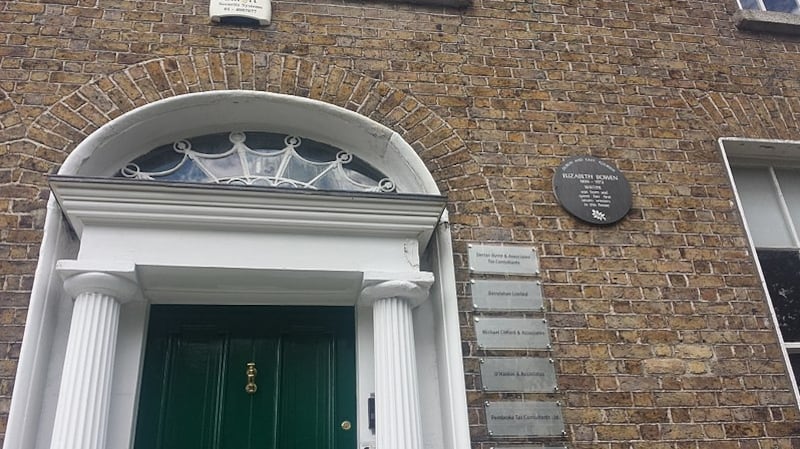"A very honourable horsefaced, upper class hard constricted mind." So wrote Virginia Woolf about Elizabeth Bowen, the Anglo-Irish writer of ten novels and more than 80 short stories, who immortalised the plight of the Irish Big House in novels such as The Last September.
Although sharp in tone, Woolf’s observation on Bowen contains more nuance than a first reading might suggest. Bowen was a chronicler of her class in its dying days, crafting considered comparisons between the English upper middle classes and the Anglo-Irish ascendancy in her works. If her people were dying out, she was keen to memorialise them without sentiment.
Born in Dublin on June 7th, 1899, she lived with her mother, Florence Isabella Pomeroy, and her father, Henry Charles Cole Bowen, in Herbert Place in Dublin. Her father suffered with his mental health, and this led to the estrangement of the couple. Florence and Elizabeth moved to Kent in 1906, and Florence died in 1912, leaving Elizabeth in the care of her aunts.

The experience of losing her mother would haunt Bowen’s fiction, which abounds with lost and alienated young women trying to find a place for themselves in the world. Bowen would capture this experience with a crystalline detachment which belies the deeply felt sorrow of her situation, writing in her novel The House in Paris (1935), “But to be quite oneself one must first waste a little time”.
Living with her aunts, Bowen attended school in Kent and Hertfordshire, and entered the LCC School of Art in 1918, soon dropping out to study journalism. Her first book, a short story collection called Encounters, was published in 1923, the same year she married Alan Charles Cameron.
Theirs was an unusual marriage, a celibate relationship which seemed to offer both much needed stability. Cameron was by all accounts something of a bore, but his successful career as secretary for education in Oxford allowed Bowen to enter the Oxford literary scene and heralded a run of books - three further short story collections and four novels, including the Last September in 1929.
Throughout the 1930s and into the 1940s Bowen visited New York, Italy, London, Calcutta and Bowen’s Court in Co Cork, and conducted a number of affairs - tolerated by Cameron - with Humphry House, writer Sean O’Faolain, and Charles Ritchie.
Irish readers will perhaps be most familiar with The Last September, Bowen’s elegiac novel of Big House life in Ireland. The novel drew from her childhood summers spent at Bowen’s Court near Doneraile in Co Cork, and other autobiographical elements such as Bowen’s short lived 1921 engagement to a British army officer. Mainly, it chronicled the passing of a way of life, and explored the disconnect between the British upper middle classes and the fading Anglo-Irish aristocracy.
The elegiac note in the book weaves a sense of a passing way of life into the fabric of the big house itself in a manner which almost grants the house its own agency: “She thought she need not worry about her youth; it wasted itself spontaneously, like sunshine elsewhere or firelight in an empty room.”
Bowen inherited Bowen’s Court in 1930, the year after The Last September was published, becoming both the first and last heiress to inherit the house. She breathed new life into it in the form of summer parties with guests such as Isaiah Berlin, Rosamond Lehmann, Irish Murdoch, Carson McCullers, and Soviet agent Goronwy Rees.
During the 1940s, Bowen was based mostly in London, but travelled often to Ireland, reporting to the Ministry of Information on wartime attitudes to England. Some of her most successful writing was produced during this decade, capturing the fevered atmosphere of wartime London in numerous short stories. Her affair with Charles Ritchie is captured in her novel In the Heat of the Day (1949).
In 1952, with Cameron’s health ailing due to alcoholism and diabetes, the couple moved permanently to Bowen’s Court. Cameron’s death that same year devastated Bowen - despite their unconventional relationship, he had symbolised permanence, stability and family.
Despite a busy workload of lecturing and residencies, Bowen was unable to manage the upkeep on Bowen’s Court and sold it to a farmer in 1959. The farmer demolished the house soon afterwards. Bowen’s reaction was philosophical; many of her novels had already served as a long goodbye to that house, its people, and lifestyle.
Bowen lived until 1972, her reputation diminishing until a revived interest in her chronicling of the Anglo-Irish ascendancy in the years following her death. If her mind was “constricted”, as Virginia Woolf put it, she found great creativity within those confines, and created a lasting body of work which immortalised her place and people.
This Extraordinary Emigrants article was written by Jessica Traynor, deputy museum director at EPIC The Irish Emigration Museum (epicchq.com) in Dublin's Docklands, an interactive museum that tells the story of how the Irish influenced the world.

















